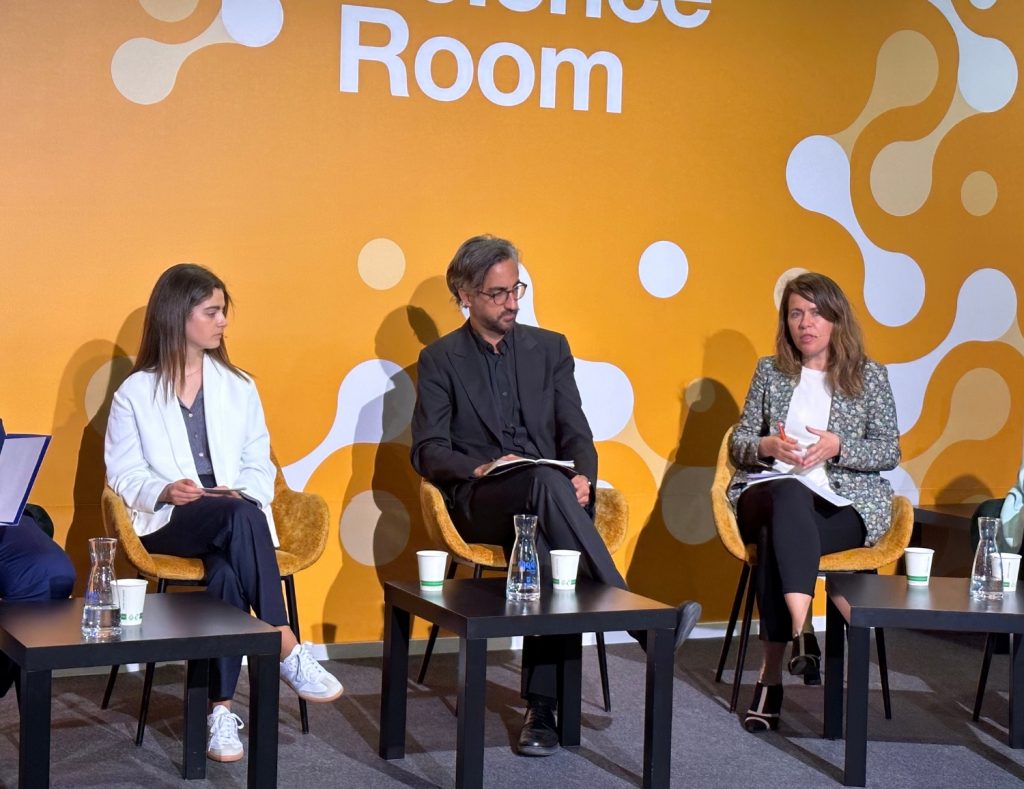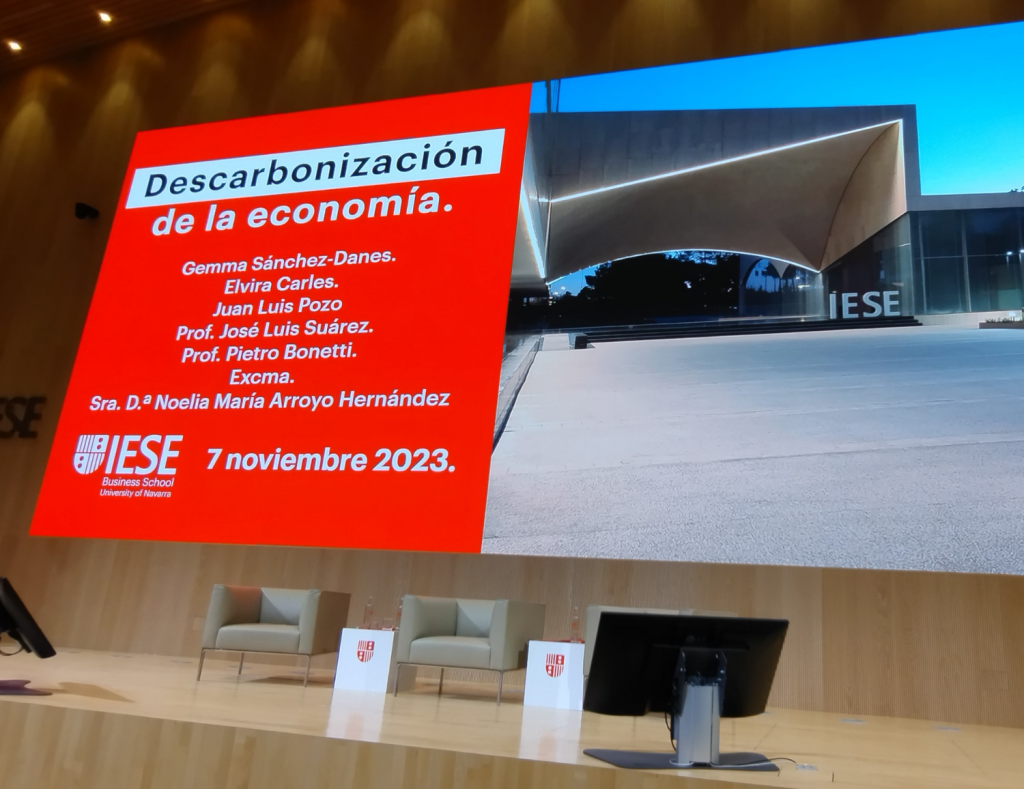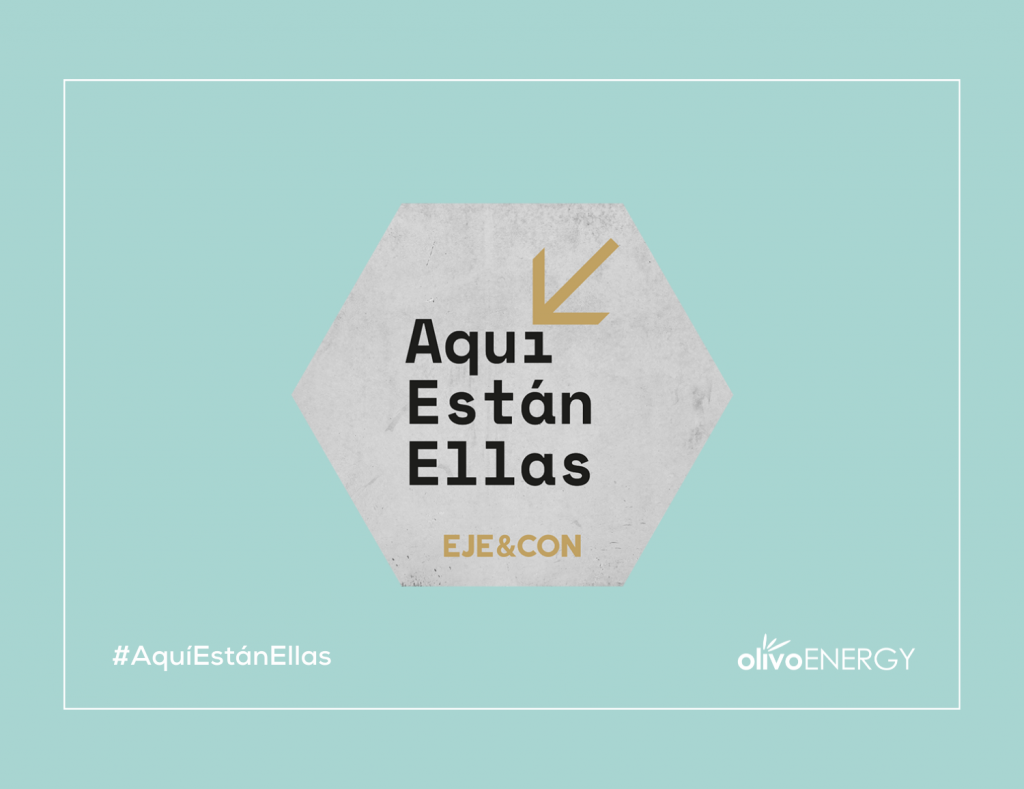As Europe pushes forward with decarbonization, electrification, and digitalization, distribution grids are becoming the critical — yet often overlooked — backbone of the energy transition. In this context, Alicia Carrasco, CEO olivoENERGY sat down with Lovisa Urheim, Head of Investor Relations and Regulatory Affairs at Plexigrid, to explore how the grid must evolve to meet the demands of a new energy era.
In this conversation, Alicia and Lovisa reflect on how Europe’s distribution networks must adapt to decentralised generation and rising demand, why traceability and real-time visibility are essential for grid optimization, how flexibility can serve as an alternative to traditional investments, and what makes Plexigrid’s approach stand out from conventional models.


Lovisa, thank you for joining me in this conversation. It is a pleasure to exchange ideas with you at such a crucial moment for Europe’s energy future. Let’s start with the big picture: what is happening in Europe right now when it comes to the transformation of our electricity grids?
Europe is currently facing a turning point in its energy system. The combination of several factors, such as climate urgency, the increasing electrification of the economy, the massive integration of renewable energies and the recent geopolitical crisis resulting from the war in Ukraine, has highlighted both the strengths and weaknesses of Europe’s electricity infrastructures. Grids, largely designed in the 20th century for unidirectional and centralised energy flow, are being forced to transform to handle a more decentralised, digital, resilient and flexible system.
This situation has exposed vulnerabilities such as grid bottlenecks, slow processing of new projects or limited flexibility in the face of abrupt changes in generation or demand. All this in a context where European citizens, industry and governments are demanding affordable prices, sustainability and security of supply at the same time.
A profound energy transition is underway in Europe, driven by key initiatives such as the Green Deal, the Affordability Act and the new Anticipatory Investments approach to strengthen and modernise electricity grids. On 2 June 2025, a European Commission roadmap was published which estimates the need to invest around €730 billion in distribution networks and a further €477 billion in transmission up to 2040. These investments are based on medium and long term scenario planning, allow cost reductions, integrate renewables and ensure an affordable energy transition.
In addition, the recent electricity crisis in the Iberian Peninsula highlighted how critical it is to strengthen cross-border connections (Spain and Portugal are connected to only ~5% of their capacity, as opposed to the European target of 15% by 2030), leaving us as an “energy island” vulnerable to power cuts.The European Union is taking a proactive approach, promoting proactive investments, i.e. anticipating future needs with infrastructure ready to expand capacity, install surplus cable pipes or provide for double circuits on poles, etc.
And how do operational aspects, such as recent black out and flexibility of the grid, fit in?
Recent disruptions have raised the priority to invest, operate and manage the network in a more flexible way. Europe is no longer satisfied with simply expanding capacity: it also demands digitisation, storage, fast responses and intelligent management of energy flows..
In line with this, Carmen Gimeno, secretary general of GEODE (the voice of local distributors in Europe), stressed on LinkedIn after a forum held two months ago at smartEn Smart Energy Europe: “Clear agreement on the need of grid investments that incidents like the last week’s blackout bring higher on the agenda, supported by innovative technology solutions and flexibility solutions. We are all in the same boat to build together a secure, green and flexible distribution grid”.
The Poland Presidency was also highlighted at another recent event in Brussels: “EU grid infrastructure and in particular distribution grids are the backbone of the energy transition and he added that without a robust infrastructure, “it is very difficult today to talk about Europe Security without considering energy infrastructure”
These approaches clearly point to the push for flexible connections, smart technologies (such as flexible operators, digitisation and batteries), and also to the design of new incentive tariffs for DSOs and TSOs to integrate flexibility without driving up costs for consumers.
Europe is building on strengths in proactive planning, digitalisation and operational flexibility, all in line with Green Deal and connectivity plans. The proactive approach must be made compatible with sensible regulation to avoid cost overruns. As Carmen Gimeno emphasises, grid modernisation is not just a matter of investment: it is the only reliable way to make European distribution networks secure, green and flexible systems, capable of avoiding blackouts and supporting the energy transition with confidence.
Why optimise is a key for the grid? And why the traceability is important to the capacity of the grid?
Optimization is essential for the grid because it enables more efficient use of existing infrastructure rather than relying on costly and time-consuming upgrades. As electricity demand grows and more renewable and distributed energy resources are integrated, simply expanding the grid is no longer a sustainable solution. Instead, optimization helps ensure that the grid operates more efficiently, reduces curtailment of renewables, and allows operators to defer or avoid new investments by managing existing assets more intelligently.
Traceability, which I understand in this context as visibility and operational awareness, is a fundamental enabler of this optimization. Without a clear, real-time understanding of what is happening on the grid, especially at the low-voltage level, it is impossible to make informed decisions or to unlock hidden capacity. Visibility allows grid operators to detect local congestion, understand actual consumption and generation patterns, and evaluate the impact of flexibility measures. It also supports transparency and accountability in how the grid is managed, which is increasingly important as more actors interact with the system.
In short, optimization allows us to get more out of the grid we already have, and traceability provides the data and insights needed to do so effectively. Without visibility, optimization becomes guesswork, and without optimization, we risk overinvesting in infrastructure we may not need.
Grids must evolve into intelligent, flexible systems. Optimization and traceability are no longer optional. They are essential for a secure and affordable energy transition

How is Plexigrid supporting the digitalization of distribution grids in Europe and Spain specifically and what makes it different from traditional grid planning or management platforms?
Plexigrid supports the digitalization of distribution grids by providing software that brings real-time visibility, advanced analytics, and flexibility management to the low- and medium-voltage network. This allows operators to monitor and optimize their grids based on accurate, high-resolution data, which is essential as electrification and distributed energy resources grow.
In Spain, Plexigrid’s technology is used to simulate future demand scenarios and identify where flexibility can replace or defer traditional grid investments. This helps operators plan more cost-effectively and make better use of existing infrastructure. Across Europe, the platform enables a shift from hardware-driven grid expansion to smarter, data-driven operations that improve efficiency and resilience.
What sets Plexigrid apart from traditional grid planning or management platforms is its focus on real-time, data-driven decision-making at the low- and medium-voltage level. Traditional platforms often rely on static data, long planning cycles, and assume uniform behaviour across the network. They typically prioritize hardware upgrades to solve capacity issues.
Plexigrid takes a different approach. It combines a detailed digital twin with real-time data and AI to simulate grid behaviour, detect congestion, and test the impact of different flexibility or investment scenarios. This enables operators to unlock existing capacity and manage the grid more efficiently without defaulting to costly infrastructure expansion. The platform also makes it possible to coordinate distributed energy resources and activate flexibility locally, which traditional systems are not designed to handle. In short, Plexigrid moves from reactive, infrastructure-heavy planning to proactive, software-led grid management.
How does Plexigrid help identify bottlenecks or idle capacity in the network?
Plexigrid helps identify bottlenecks and idle capacity by combining a digital twin of the grid with real-time and historical data from sources like AMI, ADMS, and GIS systems. This allows operators to simulate how electricity flows through the network under different conditions and pinpoint where congestion may occur or where capacity is not being fully used.
Instead of relying on static planning models or assumptions, Plexigrid continuously monitors the network to detect voltage deviations, overloaded lines, and low asset utilization. It also forecasts future scenarios such as increased electric vehicle charging or distributed generation to highlight areas where issues could develop or where there is untapped capacity. This enables operators to prioritize actions, activate flexibility, and optimize existing infrastructure before committing to new investments.


What is the difference between traditional reinforcement planning and optimised network modelling?
Traditional reinforcement planning is based on static assumptions and worst-case scenarios. Utilities typically assess peak demand forecasts over long time horizons and plan upgrades by adding physical infrastructure, such as new transformers or cables, to avoid future constraints. This approach often leads to overinvestment and underutilization because it does not consider how demand and generation actually behave in real time.
Optimised network modelling, on the other hand, uses detailed simulations based on real-time and historical data to understand how the grid performs under a variety of conditions. Instead of planning for peak demand alone, it analyses actual usage patterns, identifies bottlenecks and unused capacity, and evaluates the impact of different flexibility or reconfiguration strategies. This allows operators to delay or avoid costly reinforcements by making better use of what already exists. It is a more accurate, dynamic, and cost-effective approach to grid planning and operation.
What role does digitisation play in detecting investments that are not necessary if flexibility is well managed?
Digitisation plays a central role in identifying when grid investments may not be necessary by providing the data and tools needed to understand how the network is actually being used. With inputs from systems like AMI, ADMS, and GIS, and the use of digital twins, operators gain real-time visibility into grid performance at a much more detailed level than traditional planning allows.
This improved visibility helps reveal when expected constraints are based on outdated forecasts or rare peak events rather than consistent, real-world usage. With accurate data and advanced modelling, operators can test how flexibility measures like demand response, dynamic pricing, or network reconfiguration could solve problems without new infrastructure. Many bottlenecks are temporary or local, and can often be addressed through operational changes.
Digitisation allows operators to simulate different scenarios, monitor grid behavior continuously, and respond with precision. This shifts the focus from defaulting to infrastructure expansion to making smarter use of what already exists. As a result, investments are better targeted, more efficient, and less likely to be unnecessary.
Traditional grid planning builds for the worst-case; optimised modelling plans for reality. Digitisation helps us see where smart flexibility beats costly infrastructure

Thank you, Lovisa, for outlining the broader European context and highlighting the importance of flexibility, optimisation, and smart planning for the grids of the future. Now, let’s turn our attention to Spain, a country with exceptional renewable resources but also unique structural challenges.
Alicia what is the situation in Spain today, and how do you see the country navigating the twin goals of accelarating electrification while ensuring a robust flexible and future-proof grid?
Although Spain has enormous renewable potential, particularly solar and wind, its limited interconnection capacity with the rest of Europe continues to condition its full integration into the continental market. Internally, the accelerated electrification of demand, especially in industry and transport, is generating new demands on the grid, requiring more distributed connection points and a more flexible response capacity on the part of operators.
In addition, the need to improve regulatory processes is becoming evident: currently, decision-making on what, when and where to invest in the grid lacks traceability and agility, which hinders the timely execution of key projects.
Spain needs smarter, data-driven grid planning and efficient CAPEX investments. This is the only way to ensure a grid ready to absorb electricity growth without jeopardising the competitiveness and resilience of the system. The recent public consultation on new 2026 -31 DSO remuneration scheme introduces new incentives to foster efficiency, but it will only succeed if it is aligned with a clear framework for flexible connections, adaptable tariffs, local flexibility markets, and operational incentives that leverage flexibility as a core tool for network management.
How to strengthen cross-border interconnection to break the “energy island” of the Iberian Peninsula and increase European resilience?
Strengthening cross-border interconnection is essential to breaking structural bottlenecks in the European energy system. Physical infrastructure, such as new interconnectors and upgraded transmission corridors, forms the foundation for allowing electricity to move between countries. This is particularly important as more renewable energy is integrated, often in locations far from where demand is concentrated.
However, physical infrastructure alone is not enough. Once cross-border connections are in place, flexibility becomes critical to using them efficiently. Flexibility through demand response, storage, dynamic pricing, and improved grid control helps manage electricity flows in real time. It allows operators to address temporary constraints, balance supply and demand more locally, and unlock capacity that might otherwise be considered unavailable. In many cases, flexibility can delay or reduce the need for new investments by improving the use of existing assets.
This approach is increasingly supported by regulators, system operators, and energy economists. While physical interconnection is necessary, flexibility is often faster to deploy and more cost-effective, especially when constraints are short-term or local. Flexibility does not replace the need for infrastructure where it is missing, but it can make the system more responsive and reduce the risk of overbuilding.
To support this, cross-border coordination also needs to improve. This includes aligning operational rules, increasing transparency in how capacity is allocated, and adjusting regulatory incentives that currently favour infrastructure-heavy approaches. When physical infrastructure, flexibility, and regulation are aligned, interconnection becomes a powerful tool for a more efficient, resilient, and integrated European grid.
Spain must pair its renewable strength with smart planning and interconnection. Flexibility is key to resilience and competitiveness
We would like to thank both Lovisa Urheim and Alicia Carrasco for an insightful and forward-looking exchange. This conversation has shed light on some of the most pressing priorities for Europe’s and Spain’s electricity grids — from the urgent need for smart planning and interconnection, to the pivotal role of flexibility in ensuring resilience and competitiveness, and the importance of digitalisation, optimisation, and real-time visibility to make the most of existing infrastructure. As the energy transition accelerates, these elements will be essential in building grids that are not only robust and future-proof, but also capable of supporting a fair, secure, and affordable energy future.





















